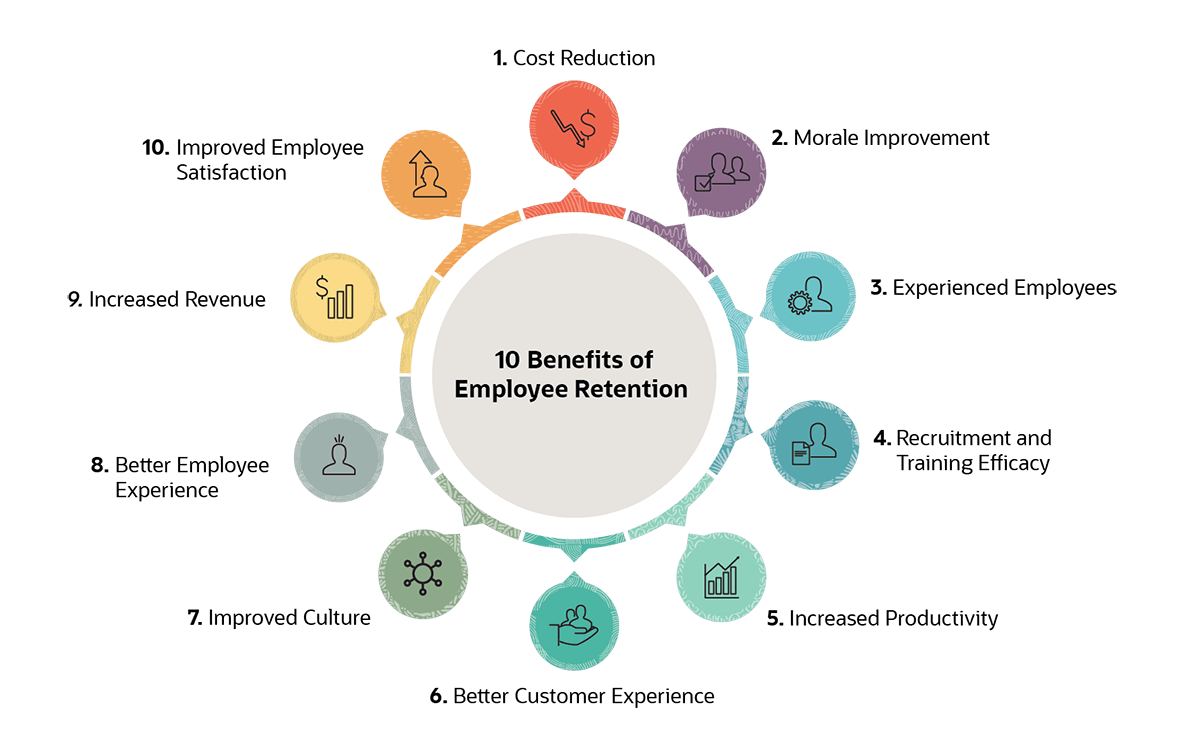
Crafting a Cohesive Workforce: Effective Employee Retention Strategies
Employee retention is a critical aspect of maintaining a stable and productive workforce. Businesses invest time and resources in recruiting top talent, making it imperative to implement effective strategies that keep employees engaged, motivated, and committed to their roles.
Creating a Positive Work Environment
A positive work environment is foundational to employee retention. Fostering a workplace culture that values open communication, collaboration, and mutual respect contributes to a sense of belonging. When employees feel supported and appreciated, they are more likely to stay with the organization.
Competitive Compensation and Benefits
Competitive compensation and benefits packages are powerful tools for retaining employees. Regularly reviewing and adjusting salary structures to align with industry standards ensures that employees feel their contributions are recognized and rewarded. Additionally, robust benefits, including healthcare, retirement plans, and wellness programs, enhance the overall package.
Professional Development Opportunities
Investing in employees’ professional growth is a win-win strategy. Offering training programs, skill development opportunities, and career advancement paths not only enhances employees’ capabilities but also signals to them that the organization is committed to their long-term success. This can significantly impact retention rates.
Flexible Work Arrangements
The modern workforce values flexibility. Providing options such as remote work, flexible hours, or compressed workweeks demonstrates an understanding of employees’ work-life balance needs. Flexibility can be a key factor in retaining talent, especially in today’s dynamic and fast-paced work environments.
Recognition and Appreciation Programs
Recognition and appreciation go a long way in boosting morale and job satisfaction. Establishing formal recognition programs, celebrating achievements, and expressing gratitude for hard work create a positive atmosphere. When employees feel valued, they are more likely to stay committed to their roles.
Open Communication Channels
Transparent and open communication is vital for employee retention. Regular feedback sessions, town hall meetings, and platforms for expressing concerns create a sense of inclusivity. Employees appreciate being heard and knowing that their opinions matter, fostering a stronger connection with the organization.
Work-Life Balance Initiatives
Promoting a healthy work-life balance is integral to employee well-being. Organizations that prioritize this aspect through policies, support programs, and clear expectations contribute to employee satisfaction. Employees are more likely to remain loyal when they feel their personal lives are respected.
Building Strong Leadership
Effective leadership is a cornerstone of employee retention. Leaders who inspire, communicate effectively, and provide clear direction contribute to a positive work environment. Investing in leadership development ensures that the organization has a cadre of capable leaders who can guide and motivate their teams.
Exit Interviews and Continuous Improvement
Conducting thorough exit interviews can provide valuable insights into why employees leave. Analyzing this feedback allows organizations to identify areas for improvement and implement changes to enhance the employee experience. Continuous refinement of retention strategies is crucial in a dynamic business landscape.
In navigating the complexities of employee retention, it’s essential to explore comprehensive strategies. For insights and guidance on effective employee retention strategies, consider visiting Employee retention strategies. Employing a combination of these strategies tailored to the organization’s culture and the needs of its workforce creates a solid foundation for building loyalty and longevity among employees.
In essence, effective employee retention strategies are multifaceted, addressing various aspects of the employee experience. By prioritizing a positive work environment, competitive compensation, professional development, and open communication, organizations can cultivate a workforce that is not only engaged but also committed to long-term success.
